-
U.S. enhances national space-weather preparedness

Space-weather events are naturally occurring phenomena in the space environment that have the potential to disrupt technologies and systems in space and on Earth. These phenomena can affect satellite and airline operations, communications networks, navigation systems, the electric power grid, and other technologies and infrastructures critical to the daily functioning, economic vitality, and security of the United States. The White House Office of Science and Technology Policy said that that is why the administration the other day released a National Space Weather Strategy and National Space Weather Action Plan, and announced new commitments from the federal and non-federal sectors to enhance national preparedness for space-weather events.
-
-
How bad will this El Niño be? Worse than you may think

Last week, Columbia University Earth Institute’s International Research Institute on Climate and Society convened a 2-day workshop reflecting on efforts over the past twenty years to improve responses to climate variability, especially risks associated with El Niño. Concerns that the current El Niño has the potential to exceed in severity the devastating El Niño of 1997-98 permeated the discussion. At the conference, Marc A. Levy of the Earth Institute presented a brief overview of the social, economic, and political changes that will have a large effect on human impacts from El Niño. He amplifies those remarks here.
-
-
U Maine launches center for studying, developing coastal and offshore structures
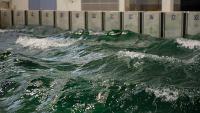
During a laboratory dedication on Monday at the University of Maine, the Harold Alfond Foundation announced a $3.9 million grant to the University of Maine to match $9.98 million already raised, formally establishing the Harold Alfond W2 Ocean Engineering Laboratory and Advanced Manufacturing Laboratory at the Advanced Structures and Composites Center on campus. The UMaine Composites Center is the largest STEM research and development program located in a Maine university, and is at the heart of one of UMaine’s seven Signature Areas of Excellence — Advanced Materials for Infrastructure and Energy.
-
-
Records: October, year-to-date hottest in human history
October 2015 was the hottest October in modern history, and the first ten months of the year have also set new records for worldwide warmth, U.S. government scientists at the National Oceanic and Atmospheric Administration (NOAA) said last week. The combined average temperature over global land and ocean surfaces for October 2015 was the highest for October in the 136-year period of record, at 0.98°C (1.76°F) above the twentieth century average of 14.0°C (57.1°F). The first ten months of 2015 comprised the warmest such period on record across the world’s land and ocean surfaces, at 0.86°C (1.55°F) above the twentieth century average, surpassing the previous record of 2014 by 0.12°C (0.22°F).
-
-
“Iconic” El Niño may bring more than rain to California
A few weeks ago in the hills north of Los Angeles, heavy rain set off widespread mudslides that blocked roads and covered highways, burying hundreds of vehicles and bringing much of Los Angeles’ infamous traffic to a standstill. For Californians, these mudslides are just one of many recent harbingers signaling the imminent arrival of a “monster” El Niño — an El Niño that started bubbling up from unusually warm temperatures in the tropical Pacific last summer. In Southern California, a strong El Niño usually signals rain, and given that California is now in the throes of a severe drought, it seems like that should be a good thing, even if it comes with risk of floods. But the reality of climate is more complex and counter-intuitive than it first appears, and Californians should be careful what they wish for.
-
-
Discovery of “hidden earthquake” challenges tsunami early-warning systems
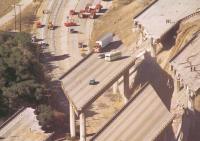
Seismologists studying the 2011 Chile earthquake have discovered a previously undetected earthquake which took place seconds after the initial rupture. This newly discovered phenomena which they have called a “closely spaced doublet” presents a challenge to earthquake and tsunami early warning systems as it increases the risk of larger-than-expected tsunamis in the aftermath of a typical subduction earthquake.
-
-
Investment portfolios may take short-term hits as a result of climate change sentiment
A new report reveals that global investment portfolios could lose up to 45 percent as a consequence of short-term shifts in climate change sentiment. The report concluded that about half of this potential loss could be avoided through portfolio reallocation, while the other half is “unhedgeable,” meaning that investors cannot necessarily protect themselves from losses unless action on climate change is taken at a system level.
-
-
Declining snow packs put many nations' water supplies at risk

Gradual melting of winter snow helps feed water to farms, cities, and ecosystems across much of the world, but this resource may soon be critically imperiled. Scientists have identified snow-dependent drainage basins across the northern hemisphere currently serving two billion people that run the risk of declining supplies as a result of global warming. “Water managers in a lot of places may need to prepare for a world where the snow reservoir no longer exists,” one scientist says.
-
-
Oklahoma Corporation Commission shuts down oil wells to reduce threat to Cushing oil hub

Cushing, Oklahoma, is the site of an immense oil tank farm, which presently stores fifty-four million barrels awaiting transfer to coastal refineries and plants. The tank farm is considered an integral and vital part of our national energy infrastructure. According to scientists, the integrity of the Cushing hub is now at risk because of fracking. Studies document that the recent disposal of millions of barrels of water into disposal wells, including those adjacent to the Cushing hub, have caused the rapid rise of earthquakes in Oklahoma. Oklahoma earthquakes have thus become a very real national security issue. Until federal expertise and support reaches Oklahoma, a potential human-made catastrophe could conceivably also become a national security disaster.
-
-
Greenhouse gas concentrations in the atmosphere hit another record
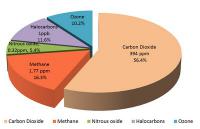
The amount of greenhouse gases in the atmosphere reached yet another new record high in 2014, continuing a relentless rise which is fueling climate change and will make the planet more dangerous and inhospitable for future generations, according to the World Meteorological Organization (WMO). The pre-industrial level of CO2 — of about 278 ppm — represented a balance between the atmosphere, the oceans, and the biosphere. Human activities such as the burning of fossil fuels has altered the natural balance, and in spring 2015, the global average concentration of CO2 crossed the 400 ppm barrier. The global annual average is likely to pass 400 ppm in 2016.
-
-
Climate change adaptation – from local initiatives to national policies
We all know that the climate is changing, but how can we best prepare for some of the changes that lie ahead? Should coastal cities change their building codes to accommodate rising sea levels? Should we allocate more resources to tree-planting to reduce urban heat islands? These are examples of local initiatives that can make a difference to climate change adaptation. Indeed, climate adaptation is a rapidly growing concern for the international community.
-
-
Quickly, inexpensively locating short circuits in power grids
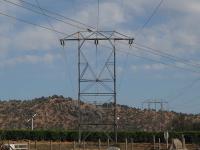
When a high-voltage power line is damaged by wind, ice, or a tree, electricity utilities must quickly find the fault location and repair it to meet the power quality requirements or avoid cascade blackout. In the common practice, they locate the fault by first identifying the section without power through the use of sensors placed at regular intervals along the power line. A technician must then go to that section and visually inspect the line in order to find the fault location. Researchers have come up with a new method, which is faster and less expensive, for precisely determining where the short circuit takes place.
-
-
Pre-drilling computer analysis could limit fracking-induced earthquakes
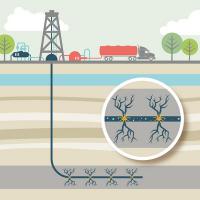
Hydraulic fracturing, also known as “fracking,” is used to break the subsurface rock mass into pieces and is done by injecting high-pressure fluid. While this gives the fluid or gas more paths to reach production wells, it also leads to several environmental problems, one of which is the unwanted shaking of the ground structures caused by the movement of large faults. Using computer analysis prior to drilling could limit seismic events as a result of hydraulic fracturing.
-
-
Actions can change outcomes of wildfires in wildland urban interface (WUI)
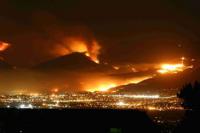
The ten years since 2002 saw an annual average of nearly 71,000 wildland urban interface (WUI) fires recorded and 1.9 million hectares (4.7 million acres) burned. Today, more than 32 percent of U.S. housing units and one-tenth of all land with housing are situated in the nation’s 89 million hectares (220 million acres) of WUI, putting approximately 72,000 communities and more than 120 million people at risk. A new study demonstrates that prompt and effective action can significantly change the outcome of fires that occur in WUI — areas where residential communities and undeveloped wildlands meet.
-
-
Fighting fire with research results
Every year, devastating forest fires take place in Europe and around the world, destroying thousands of hectares of forests and severely impacting citizens and the environment. EU-funded research teams, mindful of the current and future risks, have been focusing their efforts on developing systems and tools that can help avert disaster.
-
- All
- Regional
- Water
- Biometrics
- Borders/Immig
- Business
- Cybersecurity
- Detection
- Disasters
- Government
- Infrastructure
- International
- Public health
- Public Safety
- Communication interoperabillity
- Emergency services
- Emergency medical services
- Fire
- First response
- IEDs
- Law Enforcement
- Law Enforcement Technology
- Military technology
- Nonlethal weapons
- Nuclear weapons
- Personal protection equipment
- Police
- Notification /alert systems
- Situational awareness
- Weapons systems
- Sci-Tech
- Sector Reports
- Surveillance
- Transportation
Advertising & Marketing: advertise@newswirepubs.com
Editorial: editor@newswirepubs.com
General: info@newswirepubs.com
2010-2011 © News Wire Publications, LLC News Wire Publications, LLC
220 Old Country Road | Suite 200 | Mineola | New York | 11501
Permissions and Policies
Editorial: editor@newswirepubs.com
General: info@newswirepubs.com
2010-2011 © News Wire Publications, LLC News Wire Publications, LLC
220 Old Country Road | Suite 200 | Mineola | New York | 11501
Permissions and Policies
